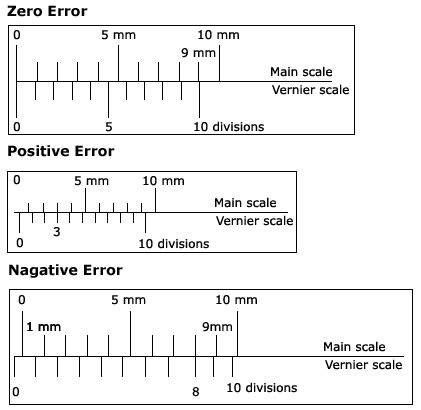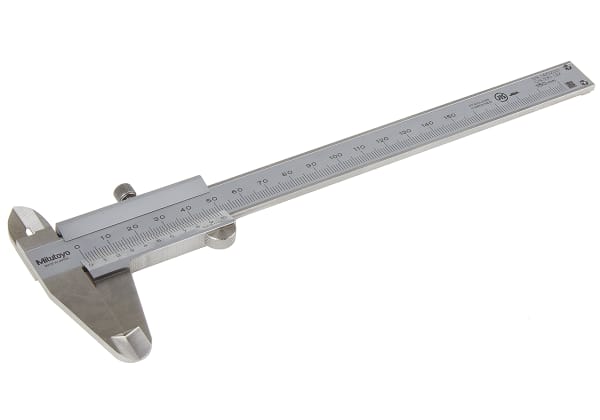- Published 8 Nov 2023
- Last Modified 29 Jan 2024
- 6 min
Guide to Vernier Calipers
Discover the ins and outs of Vernier calipers, including their applications, accurate usage, and calibration techniques in this comprehensive guide.

Reviewed by David Carmichael, Solution Engineer (November 2023)
Vernier calipers are indispensable precision measurement tools widely used across industries for their accuracy and versatility.
In this guide, we will discuss what Vernier calipers are, how they work, their applications, correct usage, reading techniques, calibration methods, and some of the best options available. Whether you're a seasoned professional or just starting to explore the world of precision measurement, this guide will provide you with valuable insights into the world of Vernier calipers.
What are Vernier Calipers?
Vernier calipers are sophisticated measuring instruments designed to accurately measure linear dimensions such as lengths, depths, and diameters. They consist of a static main scale and a sliding Vernier scale, which work in tandem to provide precise measurements. The main scale is fixed, while the Vernier scale can move in parallel along the length of the main scale. This dual-scale design enables Vernier calipers to make more precise readings with remarkable accuracy.
Vernier Calipers vs Micrometer
While both Vernier calipers and micrometers are designed for precision measurement, they have distinct differences in design and application.
Vernier calipers are more versatile and suitable for measuring various dimensions such as lengths, depths, and diameters. They have a main scale and a sliding Vernier scale. Compared to the main scale alone, the Vernier scale provides greater precision. As a result, Vernier calipers generally offer accuracy up to 0.02mm (0.001 inches).
Micrometers, on the other hand, are specifically used for taking very fine measurements with extremely high accuracy. This makes them ideal for applications that require high precision, and as such they are often used in machining and mechanical engineering. Typically, they take the form of calipers, but feature a calibrated thread or screw on the spindle. This enables precise measurements up to 0.002mm (0.0001 inches).
How Do Vernier Calipers Work?
Vernier calipers work on the Vernier scale, named after the inventor Pierre Vernier. The main scale is divided into uniform units like a standard ruler or measuring tape, and the Vernier scale has slightly smaller divisions. When the two scales are aligned, one of the Vernier scale divisions matches up with a certain number of main scale divisions. This indicates a precise measurement. This ingenious design allows Vernier calipers to provide readings down to a fraction of the smallest main scale division.
What are Vernier Calipers Used for?
Vernier calipers find applications across diverse industries including manufacturing, engineering, woodworking, metalworking, and more. They are used to measure lengths of objects, inside and outside diameters, depths of holes, and step dimensions. Whether it's ensuring the accuracy of machine parts or crafting intricate designs, vernier calipers play a pivotal role in maintaining precision and quality.
Vernier calipers are commonly used for the following purposes:
- Taking Inside Measurements: Vernier calipers can be used to measure the inside diameter of a cylinder or the outside diameter of a rod, pipe, or other cylindrical objects
- Step Measurement: You can measure the difference in height between two surfaces or steps using Vernier calipers
- Tolerance Checks: In manufacturing and engineering, Vernier calipers are used to verify whether a part's dimensions fall within specified tolerances
- Quality Control: They are commonly used in quality control processes to ensure manufactured components meet precise specifications
- Scientific Research: Vernier calipers are used in scientific experiments and research to obtain precise measurements of various physical properties
- Machining and Woodworking: They are used by machinists and woodworkers to accurately set up and measure workpieces in manufacturing and construction projects
How to Use Vernier Calipers
Using Vernier calipers to measure accurately requires proper technique. To understand how to read Vernier calipers, follow these steps:
- Start by closing the jaws and ensuring they are clean for an accurate reading
- Gently open the jaws and place the object between them, perpendicular to the caliper’s jaws
- Tighten the jaws until they securely grip the object
- Align the zero points by sliding the Vernier scale along the main scale until the zero mark on the Vernier scale aligns as closely as possible with a mark on the main scale (this will depend on the size of the object being measured)
- Once the zero points are aligned, read the value on the main scale immediately to the left of the zero point on the Vernier scale. This is the whole unit of measurement
- Look at the Vernier scale to determine which line aligns most closely with a line on the main scale. The number on the Vernier scale that aligns with a number on the main scale represents the fractional part of the measurement
- To calculate the total measurement, add the whole unit measurement from the main scale to the fractional part from the Vernier scale. For example, if the main scale reads 5mm and the Vernier scale aligns with the 0.2mm mark, your measurement is 5.2mm
This dual-scale reading system enables Vernier calipers to achieve high precision. However, accuracy is essential when reading Vernier calipers, as even a slight misalignment can lead to measurement errors.
What is the Zero Error of a Vernier Caliper
This occurs when the Vernier caliper is set to its closed position – so the measuring jaws are in contact with each other – but the zero on the Vernier scale doesn’t match the zero on the main scale. It can be caused by inadequate calibration and mechanical shock, which affects leg alignment. The image below shows the Vernier scale alongside the main scale.

How to Calibrate Vernier Calipers
Calibrating Vernier calipers ensures accuracy. This is best carried out by professionals for the highest degree of accuracy. This is done by thorough cleaning of the calipers and then controlled measurement, in a controlled environment, using calibrated gauge/reference blocks.
Regular calibration guarantees accurate measurements and extends the lifespan of your Vernier calipers. RS has the necessary facilities to carry out certificated calibrations.
Best Vernier Calipers
You can find a variety of Vernier calipers to suit your specific needs. Two popular options include digital Vernier calipers and plastic Vernier calipers.
Digital Vernier Calipers
Digital Vernier calipers offer quick and error-free measurements. Digital displays eliminate manual interpretation, reducing the likelihood of reading errors. They often come with additional features like metric to imperial unit conversion and data output capabilities.
Plastic Vernier Calipers
Plastic Vernier calipers are lightweight and economical, making them suitable for less demanding applications. While they may not provide the same accuracy as their metal counterparts, they are still valuable tools for quick measurements in non-critical situations.
Summary
Vernier calipers are essential tools for precision measurement across industries. Their ingenious design, accurate readings, and versatility make them indispensable for various applications.
By understanding how to use Vernier calipers to measure objects, you can ensure accurate results and maintain the highest standards of quality in your work. Having a reliable Vernier caliper is indispensable for any application requiring precise measurements.
Related Articles
Related links
- Everything You Need To Know About Calipers
- Calipers
- Mitutoyo 150mm Vernier Caliper 0.02 mm Resolution, Metric
- RS PRO 600mm 0.02 mm Resolution Metric
- Moore & Wright Vernier Caliper 0.02 Resolution, Metric & Imperial
- A Complete Guide to Micrometers
- Vogel 150mm Vernier Caliper, Metric
- RS PRO 300mm Imperial, Metric


